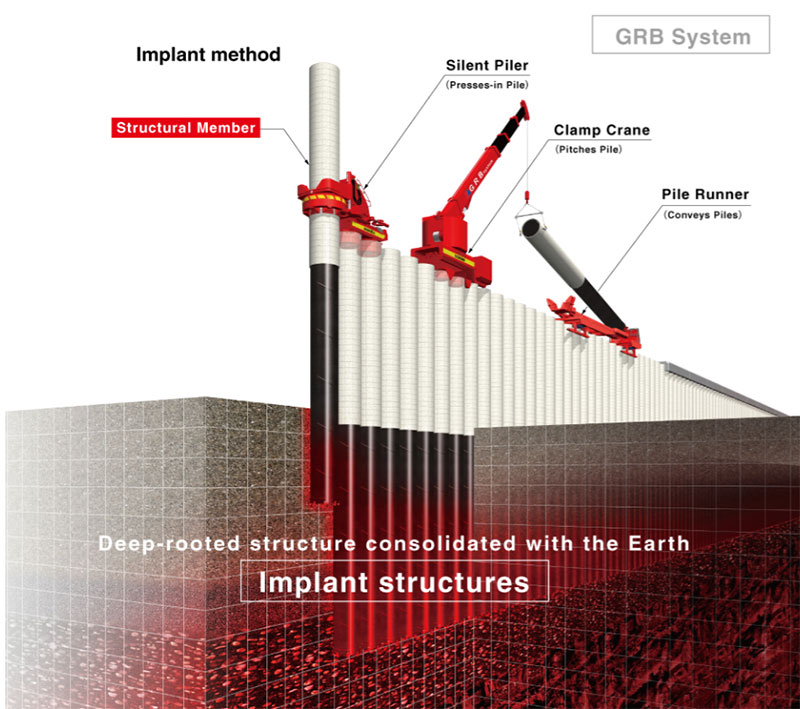Implant Wall (solution for sediment-related disaster)
GIKEN LTD.
| Publication date | May 28, 2021 (Posted on March 14, 2022) |
|---|---|
| Sector | Natural Disasters / Coastal Areas |
Company Overview

GIKEN invented the world’s first reaction-based hydraulic pile jacking machine, named “SILENT PILER™”, which generates neither vibration nor noise. We have developed machines and construction methods that have minimal impact on the environment since its foundation in 1967.
In recent years, GIKEN has been putting effort into having the “Implant Method™” adopted widely. The method is a construction method that involves the piles deeply embedded into the ground forming a contiguous wall. The piles are supported by the ground to create a robust and resilient “Implant structure™”. The Implant structure can be applied to levees, retaining walls, and bridge foundations as disaster prevention and mitigation infrastructure, contributing to the protection of human life and property from disasters.
Climate Change Impacts
As the global average temperature and the precipitation have been increasing, the risk of landslides and mudslides is also increasing in many parts of the world. In Japan, a warm and rainy country with mountainous terrain, landslides account for the highest proportion of fatalities and missing persons from natural disasters. In addition, if landslides and mudslides block transportation networks, it could cause prolonged disruptions to the recovery and socio-economic activities in the disaster-affected areas.
Adaptation Initiatives
The Implant Method, in which steel tubular piles are installed deeply into the ground, is used to build a strong contiguous wall called implant wall. As each pile is supported by the ground, the wall demonstrates high rigidity against large external forces such as earthquakes and mudslides. Moreover, the “GRB™ System”, which allows all machines to self-move on top of the installed piles, enables construction work to be carried out even in disaster-affected areas, slopes and narrow sites (Fig. 1). As the influenced-area of work is limited to the width of the machines, the work can be carried out without disturbing the traffic flow around the construction site.
Effects / Expected Benefits
By constructing a strong implant wall in an area where a landslide could hit, the possible human and economic damages can be reduced. In addition, the GRB System, with which temporary platforms are not required, enables rapid construction, which is the most important aspect of post-disaster recovery work (Fig. 2). As minimizing the influenced areas of the work, this method does not disrupt traffic flow around the construction site. Additionally, the construction work can be carried out with fewer materials and processes, resulting in lower CO2 emissions.



